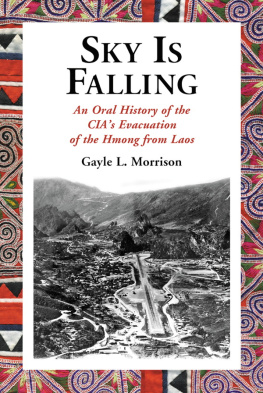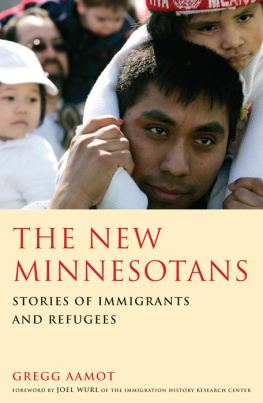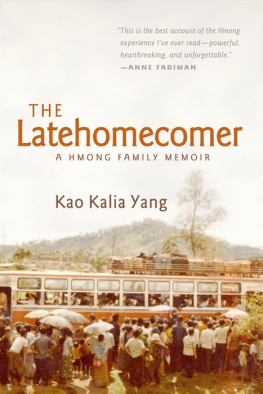THE PEOPLE OF MINNESOTA
Hmong
IN MINNESOTA
Chia Youyee Vang
Foreword by Bill Holm
MINNESOTA HISTORICAL SOCIETY PRESS
Cover: Decorative coins, photo by Shia Yang; Hmong children, courtesy May A Yang
Publication of this book was supported, in part, with funds provided by the June D. Holmquist Publication Endowment Fund of the Minnesota Historical Society.
2008 by the Minnesota Historical Society. All rights reserved. No part of this book may be used or reproduced in any manner whatsoever without written permission except in the case of brief quotations embodied in critical articles and reviews. For information, write to the Minnesota Historical Society Press, 345 Kellogg Blvd. W., St. Paul, MN 55102-1906.
www.mhspress.org
The Minnesota Historical Society Press is a member of the Association of American University Presses.
Manufactured in Canada
10 9 8 7 6 5 4 3 2 1
The paper used in this publication meets the minimum requirements of the American National Standard for Information SciencesPermanence for Printed Library Materials, ANSI Z39.481984.
International Standard Book Number 10: 0-87351-598-6 (paper)
International Standard Book Number 13: 978-0-87351-598-6 (paper)
Library of Congress Cataloging-in-Publication Data
Vang, Chia Youyee, 1971
Hmong in Minnesota / Chia Youyee Vang ; foreword by Bill Holm.
p. cm. (The people of Minnesota)
Includes bibliographical references and index.
ISBN-13: 978-0-87351-598-6 (paper : alk. paper)
ISBN-10: 0-87351-598-6 (paper : alk. paper)
E-book ISBN: 978-0-87351-737-9
1. Hmong AmericansMinnesotaHistory. 2. RefugeesMinnesotaHistory.
3. ImmigrantsMinnesotaHistory. 4. Hmong AmericansMinnesota
Social conditions. 5. Hmong AmericansMinnesotaSocial life and customs.
6. MinnesotaEthnic relations. I. Title.
F615.H55V36 2008
977.600495972dc22
2007032459
Contents
by Bill Holm
by Mao Heu Thao
Foreword
by Bill Holm
Human beings have not been clever students at learning any lessons from their three or four thousand odd years of recorded history. We repeat our mistakes from generation to generation with tedious regularity. But we ought to have learned at least one simple truth: that there is no word, no idea that is not a double-edged sword. Take, for example, the adjective ethnic. In one direction, it cuts upward, to show us the faces, the lives, the histories of our neighbors and ourselves. It shows us that we are not alone on this planetthat we are all rooted with deep tendrils growing down to our ancestors and the stories of how they came to be not there, but here. These tendrils are visible in our noses and cheekbones, our middle-aged diseases and discomforts, our food, our religious habits, our celebrations, our manner of grieving, our very names. The fact that here in Minnesota, at any rate, we mostly live together in civil harmonyshowing sometimes affectionate curiosity, sometimes puzzled irritation but seldom murderous violencespeaks well for our progress as a community of neighbors, even as members of a civilized human tribe.
But early in this new century in America we have seen the dark blade of the ethnic sword made visible, and it has cut us to the quick. From at least one angle, our national wounds from terrorist attacks are an example of ethnicity gone mad, tribal loyalty whipped to fanatical hysteria, until it turns human beings into monstrous machines of mass murder. Few tribes own a guiltless history in this regard.
The twentieth century did not see much progress toward solving the problem of ethnicity. Think of Turk and Armenian, German and Jew, Hutu and Tutsi, Protestant and Catholic, Albanian and Serb, French and Algerianthink of our own lynchings. We all hoped for better from the twenty-first century but may not get any reprieve at all from the tidal waves of violence and hatred.
As global capitalism breaks down the borders between nation-states, fanatical ethnicity rises to life like a hydra. Cheerful advertisements assure us that we are all a familywearing the same pants, drinking the same pop, singing and going online together as we spend. When we invoke family, we dont seem to remember well the ancient Greek family tragedies. We need to make not a family but a civil community of neighbors, who may neither spend nor look alike but share a desire for truthful historyan alert curiosity about the stories and the lives of our neighbors and a respect both for differenceand for privacy. We must get the metaphors right; we are neither brothers nor sisters here in Minnesota, nor even cousins. We are neighbors, all us ethnics, and that fact imposes on us a stricter obligation than blood and, to the degree to which we live up to it, makes us civilized.
As both Minnesotans and Americans, none of us can escape the fact that we ethnics, in historic terms, have hardly settled here for the length of a sneeze. Most of us have barely had time to lose the language of our ancestors or to produce protein-stuffed children half a foot taller than ourselves. What does a mere century or a little better amount to in history? Even the oldest settlersthe almost ur-inhabitants, the Dakota and Ojibweemigrated here from elsewhere on the continent. The Jeffers Petroglyphs in southwest Minnesota are probably the oldest evidence we have of any human habitation. They are still and will most likely remain only shadowy tellers of any historic truth about us. Who made this language? History is silent. The only clear facts scholars agree on about these mysterious pictures carved in hard red Sioux quartzite is that they were the work of neither of the current native tribes and can be scientifically dated only between the melting of the last glacier and the arrival of the first European settlers in the territory. They seem very old to the eye. It is good for us, I think, that our history begins not with certainty, but with mystery, cause for wonder rather than warfare.
In 1978, before the first edition of this ethnic survey appeared, a researcher came to Minneota to interview local people for information about the Icelanders. Tiny though their numbers, the Icelanders were a real ethnic group with their own language, history, and habits of mind. They settled in the late nineteenth century in three small clumps around Minneota. At that time, I could still introduce this researcher to a few old ladies born in Iceland and to a dozen children of immigrants who grew up with English as a second language, thus with thick accents. The old still prayed the Lords Prayer in Icelandic, to them the language of Jesus himself, and a handful of people could still read the ancient poems and sagas in the leather-covered editions brought as treasures from the old country. But two decades have wiped out that primary source. The first generation is gone, only a few alert and alive in the second, and the third speaks only Englishreal Americans in hardly a century. What driblets of Icelandic blood remain are mixed with a little of this, a little of that. The old thorny names, so difficult to pronounce, have been respelled, then corrected for sound.
Is this the end of ethnicity? The complete meltdown into history evaporated into global marketing anonymity? I say no. On a late October day, a letter arrives from a housewife in Nevis, Minnesota. Shes never met me, but shes been to Iceland now and met unknown cousins she found on an Internet genealogy search. The didactic voice in my books reminds her of her fathers voice: He couldve said that. Are we all literary? Weve never met, she confesses, but she gives me enough of her family tree to convince me that we might be cousins fifteen generations back. She is descended, she says with pride, from the Icelandic law speaker in 1063, Gunnar the Wise. She knows now that she is not alone in history. She has shadowing names, even dates, in her very cells. She sayswith more smug pridethat her vinarterta (an Icelandic immigrant prune cake that is often the last surviving ghost of the old country) is better than any she ate in Iceland. She invites me to sample a piece if I ever get to Nevis. Who says there is no profit and joy in ethnicity? That killjoy has obviously never tasted vinarterta!
Next page

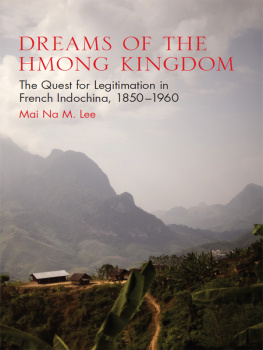


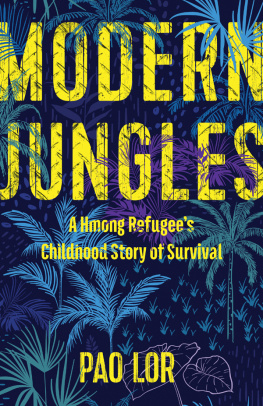

![Yang - The latehomecomer: [a Hmong family memoir]](/uploads/posts/book/165016/thumbs/yang-the-latehomecomer-a-hmong-family-memoir.jpg)
